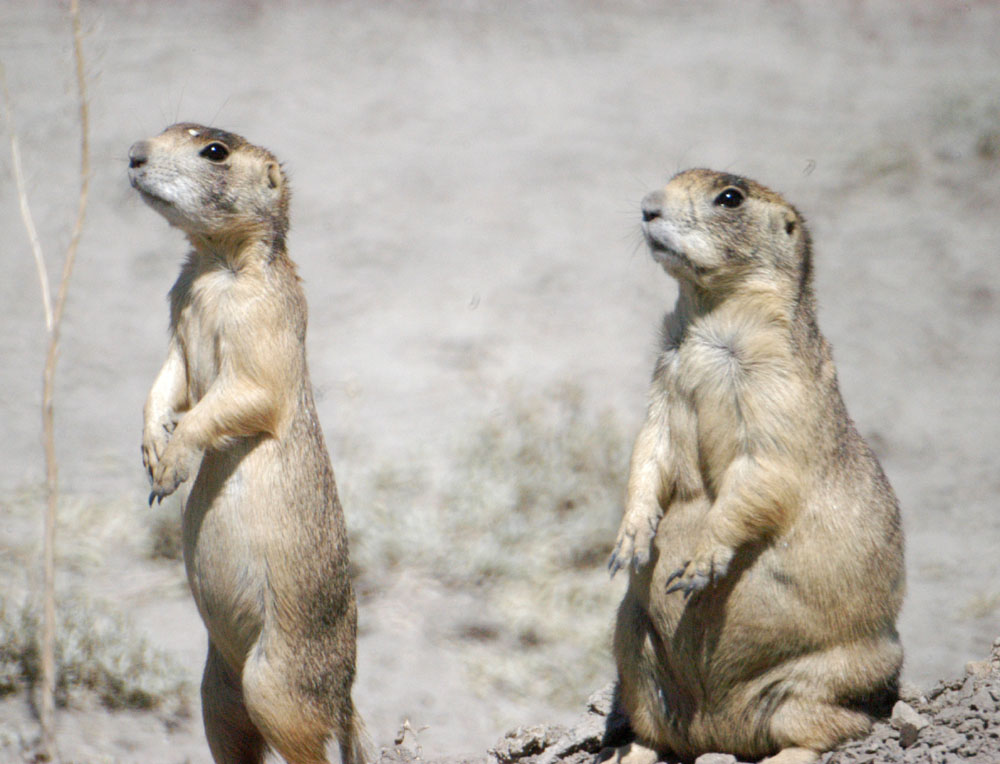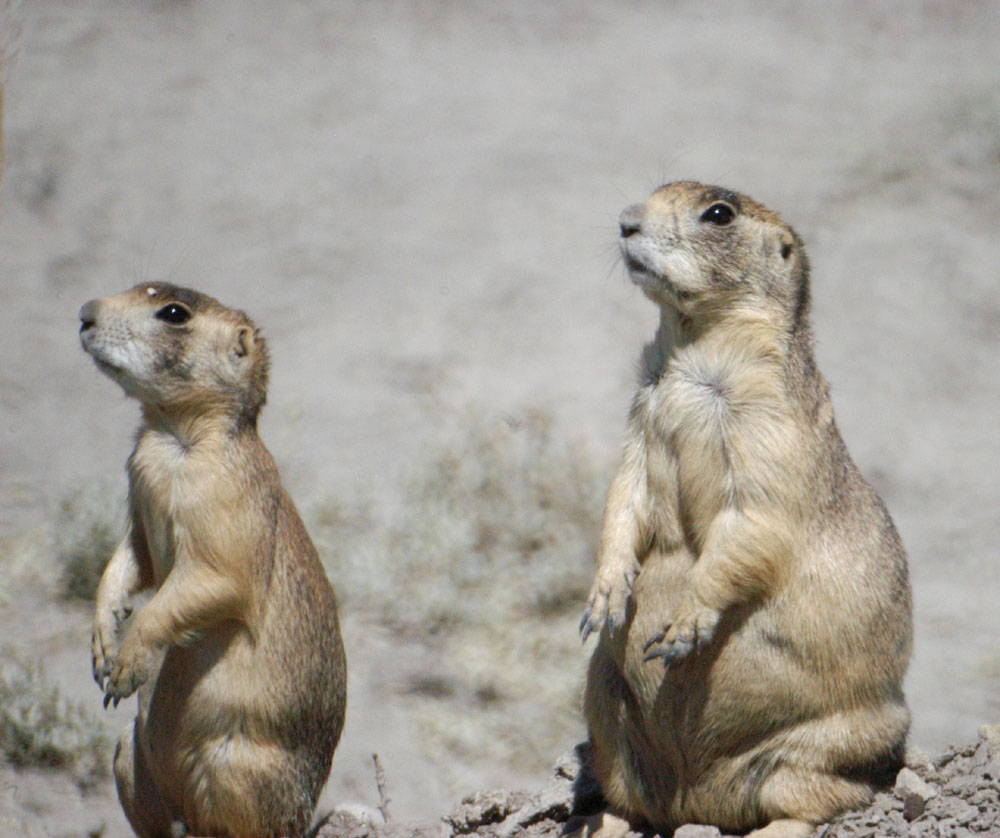Prairie Dogs
The Prairie Dogs of Utah consist of three species, only one of which is common in the area where I live: the White-tailed Prairie Dog (C. leucurus), which has a white-tipped tail and inhabits higher altitudes than the Black-tailed. It hibernates in winter and is less colonial in habit. The Black-tailed (C. ludovicianus) has a black-tipped tail and occurs sparsely over the Great Plains and throughout the Great Basin. The Utah Prairie Dog (C. parvidens) is the smallest of all Prairie Dogs, is not common and is threatened.
Prairie Dogs are robust rodents, slightly grizzled and fat. They have broad, rounded heads, hairy tails and short legs. The skull has 22 teeth.
Prairie Dogs weigh 1 1/2 to 3 lbs. The head and body are 11 to 13 inches long, with a tail length of 3 to 4 inches. They are yellowish in color, with darker ears and a pale buff to whitish belly. Prairie Dogs have whitish or buffy patches on the sides of their nose, their upper lips and around their eyes in the form of a ring.
Prairie Dogs have a high-pitched, bark-like call. Recent studies suggest that Prairie Dogs possess the most sophisticated of all natural animal languages. They apparently issue different sounds identifying various predators, which include hawks, owls, eagles, ravens, coyotes, badgers, ferrets and snakes. Prairie Dogs can run up to 35 miles per hour for short distances. The Prairie Dog has only one defense that works -- raising the alarm and disappearing quickly.
Prairie Dogs are almost exclusively vegetarian. The various native plants of the Great Plains make up the Prairie Dog's primary diet, comprising all kinds of grasses, roots, weeds, forbs and blossoms. They acquire all of their water from the food they eat. Sometimes insects are also eaten.
 |
Taken July, 2007, with Nikon D-100 and 500mm mirror lens. 1/2000 at ISO 1600 |
 |
 |